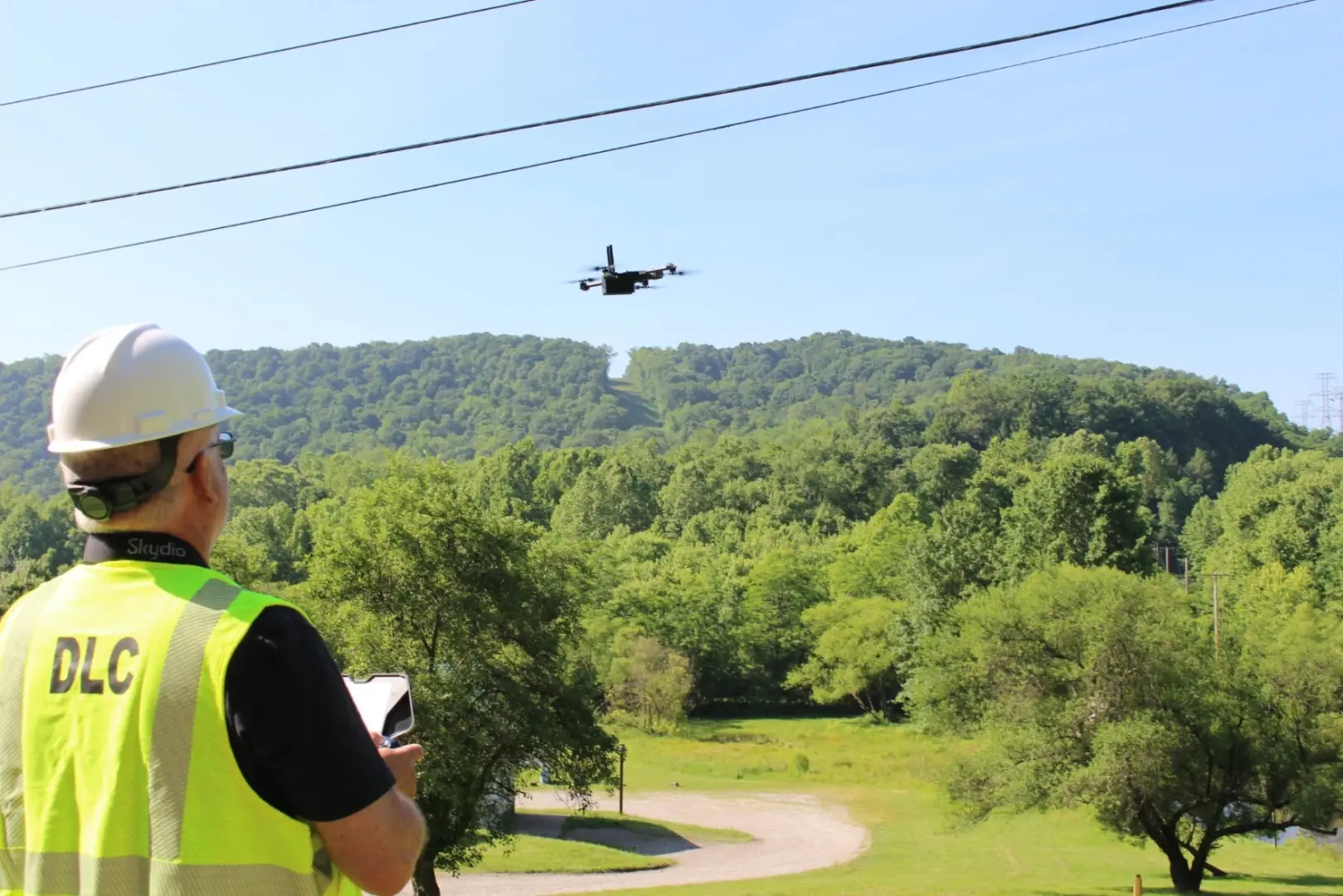
When investigating power line outages in the field, a drone can fly right next to a damaged conductor and see the damage up close.
Duquesne Light

When investigating power line outages in the field, a drone can fly right next to a damaged conductor and see the damage up close.
Duquesne Light

Duquesne Light
When investigating power line outages in the field, a drone can fly right next to a damaged conductor and see the damage up close.
Buzzing around power lines in Beaver County — it’s not a bird. It’s not a plane. It’s a drone. Duquesne Light recently sent out the remote-controlled device to inspect poles and other equipment near Aliquippa as part of a pilot project to make inspections more reliable and safer for the crew.
Duquesne Light’s new Skydio drone, armed with high resolution cameras and thermal sensors, can zoom into hard-to-reach locations, see damage from all angles and sense an overheated piece of equipment — all of which would be difficult for a human inspector. This technology could be key to eliminating power outages and keeping workers safe in the field, according to Don Kunc, senior manager of distribution operations at Duquesne Light.
“How do we use this technology to eliminate some of the hazards that our employees would have to go through especially when doing inspections like walking on a right-of-way?” Kunc said. “You know, through the woods, up and down the up and down hills and things like that, where we can do that all from the safety of the edge of the right-of-way.”
Creating drones and other robots for infrastructure is nothing new for Pittsburgh robotic companies. For the past 15 years, the city’s technology sector has been a leading developer of what’s known as field robotics technology. These autonomous machines are designed to crawl, fly and swim in places that are often dirty, dangerous or difficult to send humans. For example, companies like Eye-Bot, based in New Kensington, make autonomous drones that create 3D maps and can get into confined spaces at oil and gas sites or under bridges. As the technology matures and costs fall, Pittsburgh’s potential takes flight.
“Everybody loves innovative technology, and Pittsburgh has it in droves,” said Jennifer Apicella, executive director of Pittsburgh Robotics Network. “However, markets are what dictate business. We are seeing an uptick as more and more people understand that these technologies are not that expensive. They’re not that complicated, and they can get a very high integrity data set back.”

Get insights into WITF’s newsroom and an invitation to join in the pursuit of trustworthy journalism.
The days of journalism’s one-way street of simply producing stories for the public have long been over. Now, it’s time to find better ways to interact with you and ensure we meet your high standards of what a credible media organization should be.